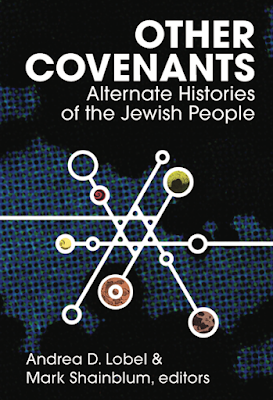A Cornucopia of Sykes-Picot Counterfactuals
Yesterday's New York Times included an interesting article, "Could Different Borders Have
Saved the Middle East?" that contains many "what ifs?" pertaining
to the Anglo-French division of the Middle East during World War I.
The Sykes-Picot Agreement is currently marking its 100th anniversary and has long been derided as having laid the groundwork of much of the contemporary Middle East's political dysfunction. According to generations of scholars, the Agreement drew arbitrary political boundaries that corresponded only imperfectly with the region's ethnic and sectarian realities.
The Sykes-Picot Agreement is currently marking its 100th anniversary and has long been derided as having laid the groundwork of much of the contemporary Middle East's political dysfunction. According to generations of scholars, the Agreement drew arbitrary political boundaries that corresponded only imperfectly with the region's ethnic and sectarian realities.
The implication is that without the Agreement,
history would have turned out better.
But would it have?
In a perfect illustration of good counterfactual
methodology, the Times articles explores alternate proposals for dividing up
the region in order to show how things would have, well, turned out more or
less the same. As the article puts in (in a deterministic counterfactual):
“whatever
problems those schemes have caused, the alternative ideas for dividing up the
region probably weren’t much better. Creating countries out of diverse
territories is a violent, imperfect process.”
In March 1920, Faisal bin Hussein,
who led the Arab armies in their British-supported revolt against the Ottomans
during World War I, became the leader of the independent Arab Kingdom of Syria,
based in Damascus. His ambitious borders stretched across modern-day Syria,
Jordan, Israel and parts of Turkey. (But not Iraq.)
Would Faisal’s map have been an authentic alternative to the
externally imposed borders that came in the end? We’ll never know. The French,
who opposed his plan, defeated his army in July. But even if they hadn’t, Faisal’s territorial claims would
have put him in direct conflict with Maronite Christians pushing for
independence in what is today Lebanon, with Jewish settlers who had begun their
Zionist project in Palestine, and with Turkish nationalists who sought to unite
Anatolia.”
An equally interesting example is an American plan from 1919. In that year, “President Woodrow Wilson sent a delegation to
devise a better way to divide the region. Henry King, a theologian, and Charles
Crane, an industrialist, conducted hundreds of interviews in order to prepare a
map in accordance with the ideal of national self-determination.”
“Was this a missed opportunity to draw the region’s “real”
borders? Doubtful. After careful study, King and Crane realized how difficult
the task was: They split the difference between making Lebanon independent or
making it part of Syria with a proposal for “limited autonomy.” They thought
the Kurds might be best off incorporated into Iraq or even Turkey. And they
were certain that Sunnis and Shiites belonged together in a unified Iraq. In
the end, the French and British ignored the recommendations.”
And then my favorite part of the
entire article:
“If only they had listened, things might have turned out more or
less the same.”
This concluding sentence perfectly
illustrates what happens when you cross a “missed opportunity counterfactual”
with a “deterministic counterfactual.”
The punch line is not particularly
funny, but that does not make it any less true. It epitomizes what happens when
an idealist is mugged by a realist.





Comments